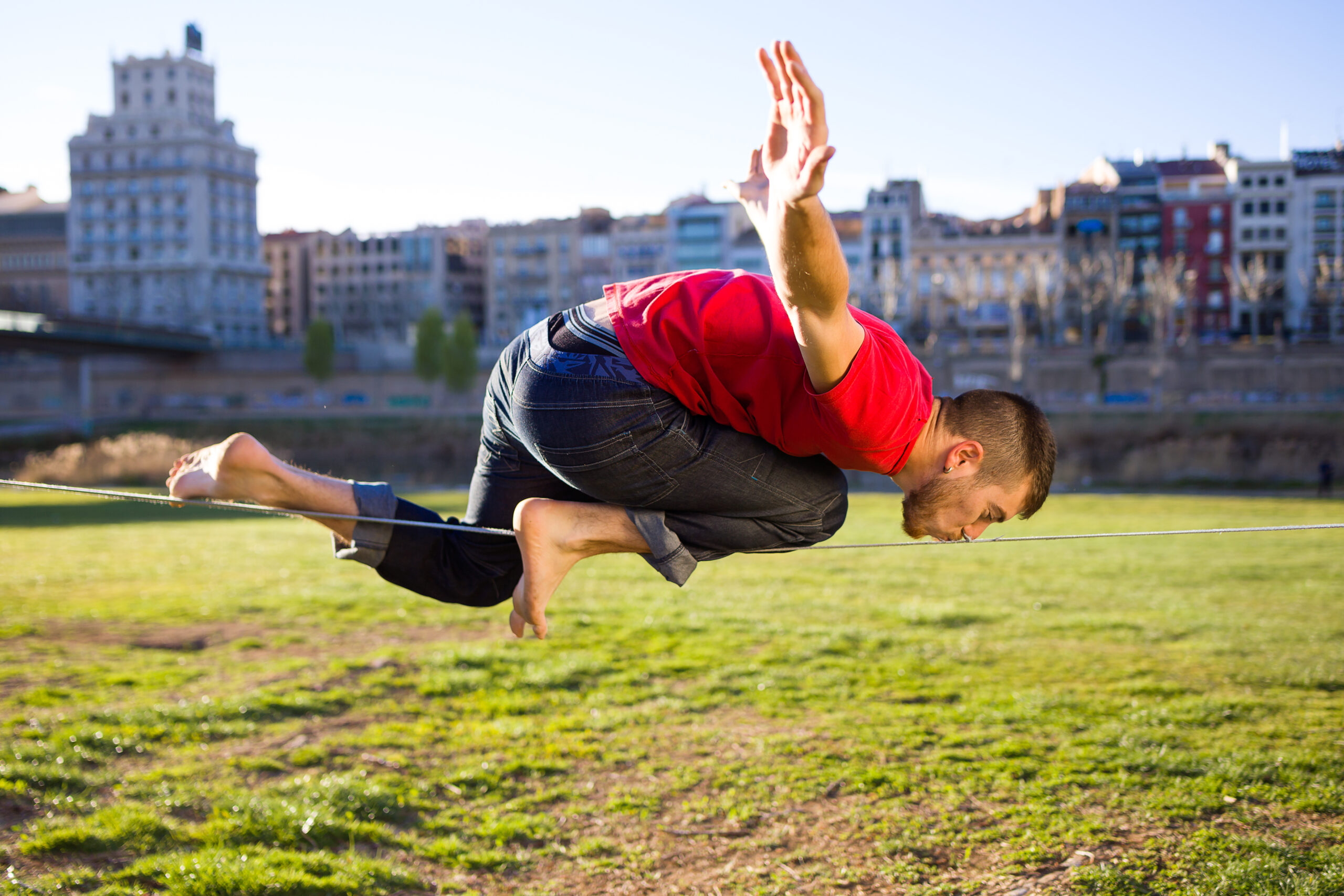I’ve read statistics that show that up to 70% of adults will suffer from lower back pain during their lifetime. As a result you might avoid doing certain activities you feel could cause you back injury or might worsen pain you already suffer.
If you suffer from stiff muscles and lack of balance, you might wonder if slacklining is bad for your back or might otherwise lead to injury. In actuality, the opposite might be true.
Slacklining can actually help back pain by improving your posture while strengthening core muscles and improving your lower body strength. Slacklining is now incorporated into rehabilitation programs by therapists and chirporactors due to potential benefits including incorporation of many muscles.
Below we’ll talk about several potential health benefits of slacklining that can benefit your back.
Slacklining can improve your posture
Among other things, bad posture can cause lower back pain and lower your self confidence while also negatively affecting people’s opinion of you if you’re seen as a slouch. It just has a way of not only hurting you physically but also how you are seen in the eyes of others.
The proper slackline stance involves having your head in line with your feet and your knees slightly bent. You put your arms out to your sides like you’re on a balance beam and move your arms over your head back and forth as needed to keep your balance.
Then you start getting your core and legs involved along with your hips and spine and then the erector muscles in your back get activated too.
Research has shown that improved postural control after slacklining was noted in test subjects, meaning that you can develop better posture control over time and with practice.
Slacklining works your core muscles
Slacklining works a number of muscles in your core including your abdominals, glutes and back muscles. You’ll also get your hips and spine involved working in conjunction with your legs and lower body which we’ll get to in a moment.
One of the things you notice with slacklining is that it requires a full body workout out of sorts, activating and testing many core (and lower body) muscles. So if you already have a strong core, you’re ahead of the game.
But if not, you’ll soon notice improvements as you progress as a slackliner.
Slacklining works your legs and lower body in general
You’re going to use your legs to stabilize yourself on the slackline of course but more specifically, you’re going to utilize your glutes and also get some work in on your knees and ankles.
If you go barefoot on the slackline you’ll be able to use your toes to grip the line more so than if you wear shoes too, FYI.
While we’re on the subject of your legs, slacklining can also help prevent knee injuries by improving knee joint stability while also helping rehab ACL ruptures, ankle sprains and other lower body injuries.
Slackline yoga can help alleviate back pain
Doing yoga moves on the slackline is a real thing, and it’s referred to as slackline yoga. You can incorporate various yoga moves such as basic sitting and standing poses but also more challenging ones involving standing on your head, balancing on the slackline and even doing the splits, if you’re so inclined.
While some yoga poses can exacerbate lower back pain, other ones can actually help specific back muscles that support the back and spine. It is important to check with your doctor first if you suffer from back pain but yoga can help loosen tight muscles, teach you meditation, improve concentration and relax you. These are all great traits that aid in successful and fun slacklining.
Scroll down on this page from Yoga Slackers to view an entire library of yoga poses you can try on a slackline.
You can find yoga-specific slacklining kits that are generally up to 50′ in length. While experienced yoga slackline pros may use 2″ wide slacklines you’ll also see 1″ lines available.
Summary
Slacklining can be a positive activity to assist with back pain, tight muscles and for rehab. Physiotherapists and chiropractors are two types of healthcare professionals who have added slacklining to their rehab regimen for some clients due to the benefits it offers.
While slacklining is a full body workout, it places a particular emphasis on core muscles in your back and abdomen as well as your back.
Check out my article called What Muscles Does Slacklining Work to continue learning about the health benefits slacklining may offer you.
Recent Posts
Slacklining involves balancing and walking on a flexible nylon or polyester webbed line that is attached to a fixed point like a tree or pole at each end. The name slackline comes from the fact...
Why do we slackline? Slacklining offers a number of benefits in addition to being a fun activity for a wide variety of people to take part in. While you can slackline by yourself, you can also do it...


